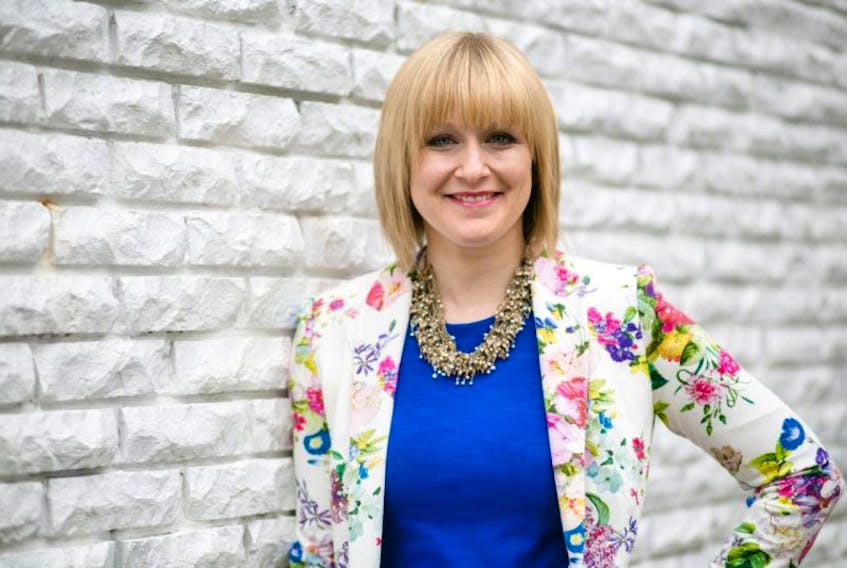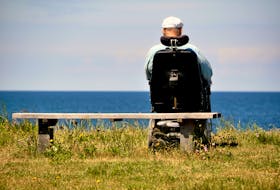Stacks of papers, piled boxes of everything from dishes to ornaments, mounds of clothing — the list goes on. Sometimes the kitchen, living room and bathroom are so cluttered they are unusable.
A person in this situation could be diagnosed with hoarding disorder — a recognized mental disorder. Or, they could have hoarding behaviour, in which the hoarding is a symptom of some other ailment.
St. John’s professional organizer April Miller encounters these situations through her work and digs in to help people get out from under the worrisome piles.
Among her credentials Miller has a Masters of Education (counselling psychology) and a hoarding specialist certificate from the Institute for Challenging Disorganization.
Complex issue
She says about 20 per cent of her business is with clients who have problems with hoarding.
“Hoarding is a complex issue and that is what most people don’t understand,” she said. “People with hoarding disorder don’t know why they do it, they just feel an inherent need to collect items with literally no rational thought behind it.
“My clients don’t shower in their bathroom, can’t cook in their kitchen. Usually, in terms of diagnostic, they would usually look at the kitchen, living room and bedroom to see if they are functional.”
In 2013, hoarding was included as its own diagnosis “hoarding disorder” in the Diagnostic and Statistical Manual of Mental Disorders (DSM).
Miller said the DSM is the “kind of bible” for mental health diagnosis.
“The important distinction for me between hoarding disorder and hoarding behaviour is that hoarding can be its own illness, or it can be a symptom of other things,” she said.
“If, for example, it is actually hoarding disorder diagnosable by a psychiatrist, one of the key traits is that you would have persistent difficulty discarding possessions and it wouldn’t matter what their value is. There are people who will hoard very expensive things and people who will hoard garbage.”
Miller said just going into such a person’s home and cleaning up the mess is not the answer. The mental health aspect has to be treated at the same time, she said.
“I don’t take on any clients unless they are working with a mental health professional, as well,” she said. “That’s kind of a criteria of mine. Unless they are dealing with that with someone, a psychiatrist or a psychologist, they are not going to get better. And what usually happens if you just do a clean out, they’ll collect it all up again, but faster.”
Reality shows raised awareness
Awareness of the issue of hoarding has increased in recent years due, in part, to a number of hoarding-related television shows such as TLC’s “Hoarding: Buried Alive.”
While there hasn’t been much research in Canada to show what percentage of the population may have hoarding disorder or hoarding behaviour, American statistics show that between three and five per cent of the population can be classified as hoarders.
“The stuff that is kind of sensationalized on television tends, obviously, to be the garbage side of things, but certainly for me and the people I work with, that is not necessarily the case,” Miller said. “It’s often a lot of paper, a lot of clothing. That tends to be it. People who are hoarding garbage usually qualify for a different diagnosis. So, for example, they might have dementia and living in squalor as a result of the dementia.”
In society it is common that, when a person is invited into someone’s home, the homeowner says to you before you enter, “don’t mind the mess.”
Usually, it’s because they didn’t have time to tidy up before the visitor dropped by.
To go a little further, a person can be labelled by family or friends as a packrat.
Miller notes that, in some cases, people are actually collectors of certain things and that can take up a lot of space. Or they like to keep a lot more general items around than other people do, but tidy it up or declutter when they find the time.
Extreme cases
In extreme cases, when hoarding is suspected she said, you may have difficulty getting around in a person’s home, and the home is no longer functional to the person or people living there, and there may be safety risks.
“For a typical packrat your basement is stogged, your garage is packed, and the spare room might be packed and there might be more clutter than some people are comfortable with, but generally speaking their spaces are usable,” she said.
“But when it tips that scale, and when I would say for me anecdotally, not diagnostically, when it is causing conflict to the point that maybe family members won’t visit or there are safety concerns, you are kind of tipping the scale.”
Miller also said that a person with hoarding disorder can find themselves in distress or impaired in relation to social, occupational and other areas of functioning.
“They don’t have anyone come into their house. They would have an elevated rate of divorce. It’s hard because the other person asks them to clean up the mess, but that’s like telling someone with OCD to stop washing your hands, like that is not going to happen without intervention,” she said.
While the problem is typically maintained to the home, it can carry over to the workplace in certain cases.
Furthermore, even though a person affected may be a great parent, there could be safety concerns where children are living in the home.
“I’ve been contacted by the Department of (Children, Seniors and Social Development as it is currently called) to go in and intervene with parents so they wouldn’t lose their kids,” Miller said. “If they can’t maintain a safe environment for themselves and others, that is considered an impairment in functioning that could contribute to a diagnosis.
“It could be falling hazard, tripping hazard, a lot of paper products near the stove, exits blocked, windows blocked. The other thing is that you see people can’t maintain their home properly. It’s just not accessible. A plumbing problem never gets repaired and you have mold, there are wiring issues and no can get to the electrical box or wires, and you could have an electrical fire. So it can get pretty severe. It certainly could be unfit for kids without intervention.”









